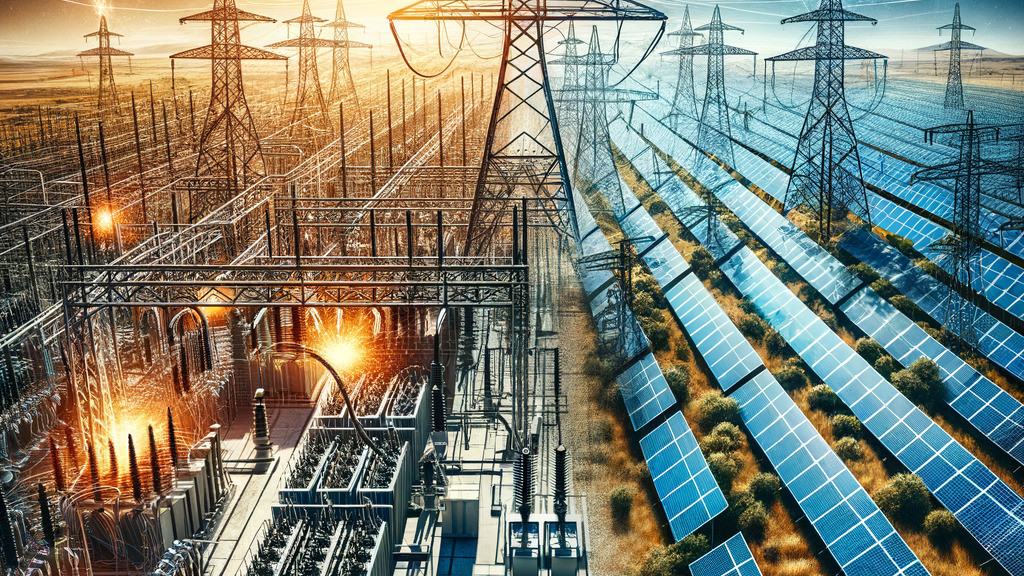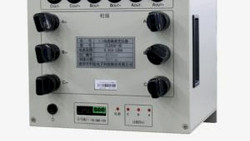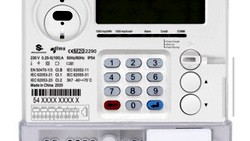As renewable energy sources like solar and wind power have increasingly been integrated into national power grids, utilities have observed a rise in conducted disturbances that can disrupt normal grid operations. Conducted disturbances refer to temporary voltage or current abnormalities that are transmitted through the power lines themselves rather than through electromagnetic fields.
While renewable energy brings numerous environmental and economic benefits, the intermittent and less predictable nature of these resources compared to conventional generation has also introduced new challenges for grid stability and reliability.
One such challenge is the growing occurrence of conducted disturbances stemming from high penetrations of distributed solar PV and wind power. These renewable resources can cause rapid and unexpected fluctuations in the flow of power across transmission and distribution lines. When lots of solar panels or wind turbines suddenly start or stop generating due to changes in sunlight or wind speeds, the resulting surges or dips in current and voltage must be balanced instantaneously by the grid to maintain normal 50 or 60 Hz frequencies. Large imbalances risk triggering protective relay equipment and causing blackouts if not addressed quickly enough through ancillary services like frequency regulation reserves.
The types of conducted disturbances associated with renewable integration include temporary overvoltages, undervoltages, overcurrents, phase imbalances, waveform notching, and harmonic resonance issues.
Overvoltages occur when significant amounts of solar or wind power begin generating very rapidly, such as when clouds pass and exposed panels surge to full output within seconds. Undervoltages are the opposite effect when generation falls abruptly.
Phase imbalances result from uneven outputs across the three voltage phases in an electrical system.
Waveform notching appears as dips or "notches" in the smooth sinusoidal curves of alternating current waves.
Harmonic resonance issues emerge at specific frequencies where interactions between system components can amplify distortion in current or voltage signals.
These phenomenon pose various risks for utility equipment and customer loads connected to the grid. Overvoltages and overcurrents can damage electrical insulation, cause premature equipment failures, and trigger protective devices like fuses or circuit breakers leading to outages. Undervoltages strain motors and other inductive loads. Imbalances and distortions increase power losses, heating, audible noise from transformers and motors, and may interfere with control and communication systems.
Sensitive electronic devices are especially vulnerable to voltage fluctuations. The cumulative effect of more frequent and intense conducted disturbances across widespread areas of the grid has generated urgent concerns around asset management, power quality, and reliability standards compliance.

(symbol image, credit CLOU)
Several case studies illustrate how conducted disturbances associated with renewable energy integration are already impacting utility operations. In California, Xcel Energy reported widespread overvoltage events across parts of its territory during large ramps of solar PV generation. In upstate New York, National Grid observed harmonic resonance issues on one of its circuits after a large amount of distributed solar was interconnected at once. Spanish TSO Red Eléctrica de España logged numerous phase imbalances, over- and undervoltages across its high voltage network during periods of high wind power penetration in certain regions.
Utilities have responded by implementing measures to better predict and control voltage and current variations on the grid. These include installing dynamic line rating systems to continuously factor changing weather conditions into transmission line ampacity limits. Controllable voltage regulators, transformer load tap changers, and statcoms or static VAR compensators help tightly control voltages throughout the system in response to net load swings.
Coordination of dispersed solar and wind plant controls aims to smooth geographic diversity effects. Energy storage, demand response aggregation, and other types of grid-forming inverters supply critical frequency regulation and ramping services missing from solar panels and wind turbines alone.
At the same time, transmission planners incorporate "N-1" contingency analysis into renewable generation and load forecasts to anticipate single equipment outages without overloads or excursions from allowable voltage ranges.
The "N-1" contingency analysis is a principle widely used in power system engineering. It's a way of ensuring that the electricity network can withstand the failure of any single component—be it a transmission line, transformer, or generation unit—without causing a widespread power outage. This "one failure" is the "-1" in "N-1", with "N" representing the normal operation condition of the power system.
Distribution management systems employ advanced functions like volt/VAR optimization to dynamically optimize conservation voltage reduction across grids with high distributed energy resources. Targeted grid hardening like replacing overhead lines, upgrading transformers, and adding redundant path capacity mitigates asset risks from more volatile operating conditions. And upgraded protection, control, and monitoring equipment enable faster fault detection and isolation during transient disturbances.
Adopting international grid codes that address power quality requirements for high penetrations of renewable resources also supports greater interconnection. Specific standards established in places like Germany and Ireland lay out technical capabilities wind and solar plants must demonstrate to provide voltage and frequency ride-through, ramp rate controls, reactive power support, and other functions needed to maintain stability.
Coordinated interconnection and operations across broader regions like WECC in the western U.S. spreads variability impacts over larger footprints as well.
Despite these active countermeasures, conducted disturbance pressures will likely increase further as the global energy transition progresses. Projections indicate renewable shares may reach 40-60% of generation capacity within utility territories by 2030-2050 based on national climate targets and cost competitiveness trends.
Handling such high instantaneous variability and uncertainty demands even more refined control capabilities through transactive energy networks, distributed energy resource aggregation platforms, and grid-enhancing ancillary services yet to be fully realized at wide commercial scales.
Advanced computing and big data analytics additionally play key roles optimizing renewable plant dispatch, predicting demand and net load changes minute-by-minute for balanced operations.
Takeaway
The surge of renewable energy brings praiseworthy environmental advantages but also inadvertently drives technical challenges like more conducted disturbances on power delivery systems. By proactively improving monitoring, modeling, controls coordination, protection practices, infrastructure upgrades, grid codes, and cross-functional cooperation, electric utilities can effectively accommodate growing renewable penetrations while also ensuring continued reliability, resilience, and power quality for customers amidst the clean energy transition.
Mitigating conducted disturbance impacts requires integrated solutions across generation, transmission, distribution and end-use domains through open collaboration between regulators, utilities and technology innovators. With commitment and innovation, grid operators can seamlessly integrate high levels of renewable generation into power grids worldwide.
Thank you for reading. If you would like to share your insights on the challenges and solutions associated with renewable energy integration, please feel free to leave a comment below. Your expertise and perspectives are immensely valuable as we navigate this complex transition.
Until then, keep shining bright like a solar panel on a sunny day!






All comments are moderated before being published. Inappropriate or off-topic comments may not be approved.